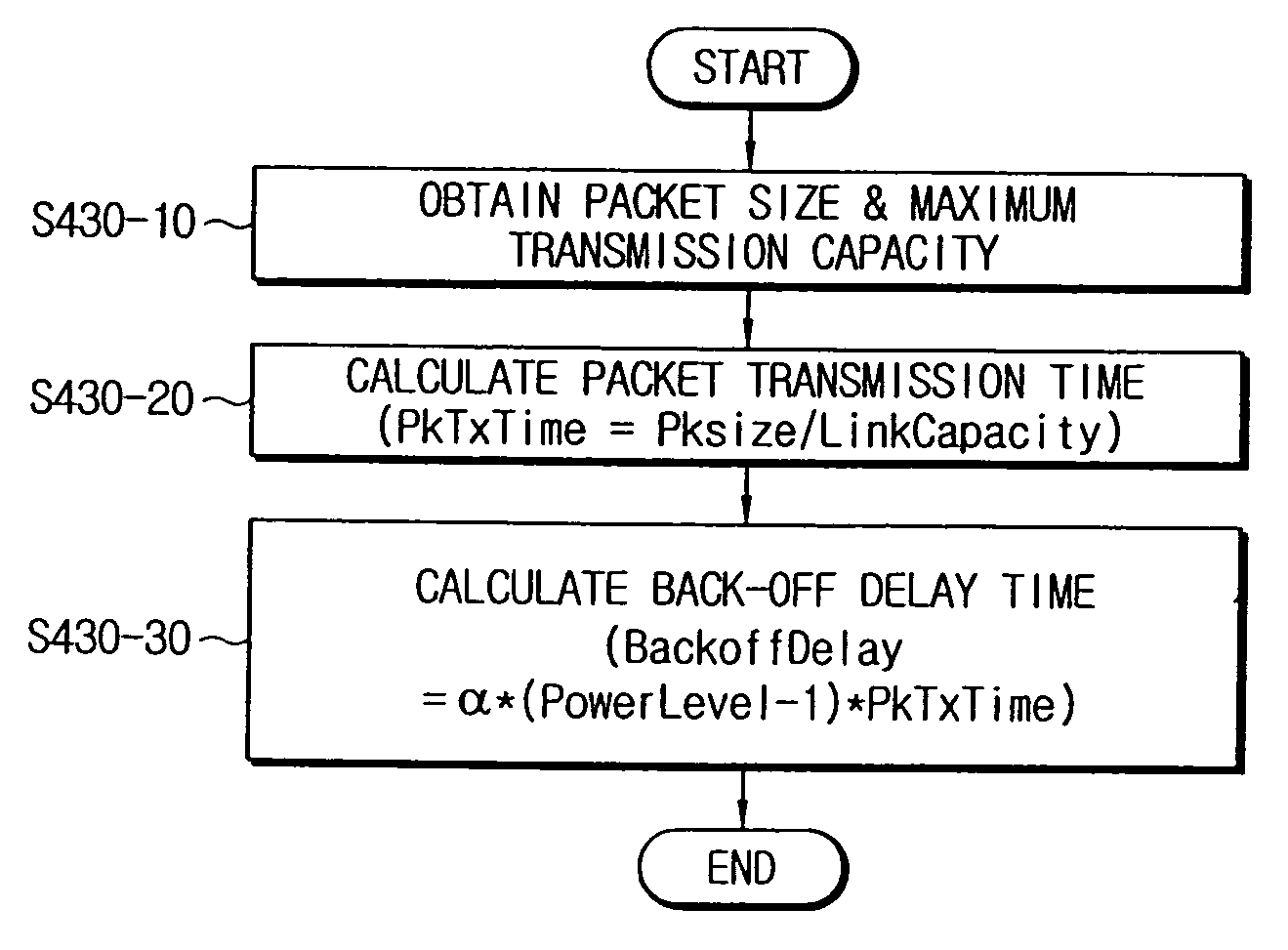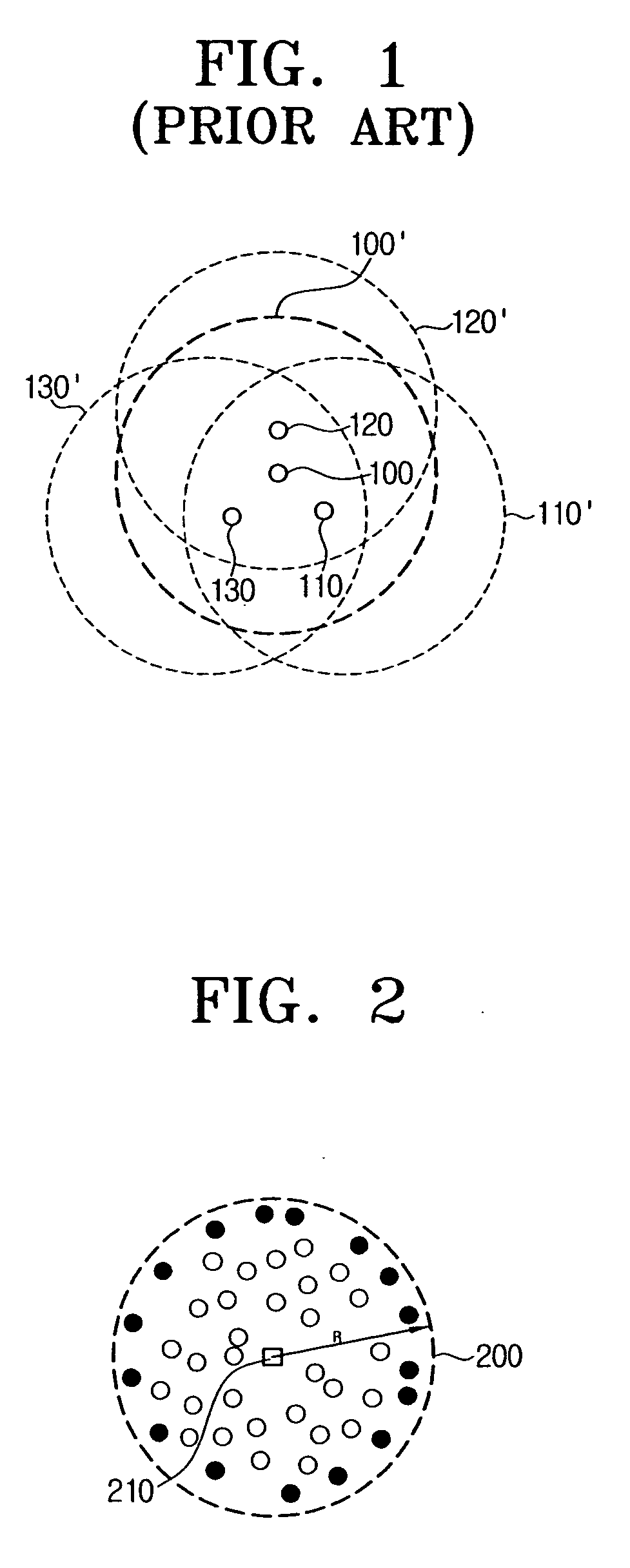Method for performing packet flooding at wireless ad hoc network
a wireless ad hoc network and packet flooding technology, applied in data switching networks, high-level techniques, frequency-division multiplex, etc., can solve problems such as more frequent collisions, difficult installation of wired equipment, and source not always reaching the destination directly
- Summary
- Abstract
- Description
- Claims
- Application Information
AI Technical Summary
Benefits of technology
Problems solved by technology
Method used
Image
Examples
Embodiment Construction
[0034] Hereinafter, the present invention will be described in detail with reference to several preferred embodiments and the accompanying drawings.
[0035] FIG. 2 is a view of an ad hoc network, for illustrating a method for performing packet flooding according to an exemplary embodiment of the present invention.
[0036] In FIG. 2, there are plural black or white dots within a circle 200. The circle 200 corresponds to the transmission range R of a source node 210.
[0037] If all the nodes within the circle 200, i.e., within the transmission range R perform the packet flooding, problems such as overlaying flooding, collisions and delay in transmission occur. Conventionally, all the neighboring nodes of the source node perform the packet flooding if the packet they received from the source node is the first packet. Accordingly, packets are repeatedly transmitted in transmission ranges of the neighboring nodes which are overlaying many times. If this occurs, collisions and subsequent transm...
PUM
 Login to View More
Login to View More Abstract
Description
Claims
Application Information
 Login to View More
Login to View More - R&D
- Intellectual Property
- Life Sciences
- Materials
- Tech Scout
- Unparalleled Data Quality
- Higher Quality Content
- 60% Fewer Hallucinations
Browse by: Latest US Patents, China's latest patents, Technical Efficacy Thesaurus, Application Domain, Technology Topic, Popular Technical Reports.
© 2025 PatSnap. All rights reserved.Legal|Privacy policy|Modern Slavery Act Transparency Statement|Sitemap|About US| Contact US: help@patsnap.com



